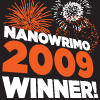Non-Fiction 5 Challenge #2
 The year 1606 saw the first recorded landing of Europeans on Australian soil with the arrival of the Dutch ship Duyfken. Claims have abounded of other, earlier discoveries by Spanish, Portuguese, or even Chinese ships. These theories have been bolstered by mediaeval maps which show a large southern landmass; and in particular the ‘Dieppe’ maps, whose southern continent is labelled Jave la Grande. And part of Jave la Grande’s east coast looks rather like a misplaced, stretched-out Queensland.
The year 1606 saw the first recorded landing of Europeans on Australian soil with the arrival of the Dutch ship Duyfken. Claims have abounded of other, earlier discoveries by Spanish, Portuguese, or even Chinese ships. These theories have been bolstered by mediaeval maps which show a large southern landmass; and in particular the ‘Dieppe’ maps, whose southern continent is labelled Jave la Grande. And part of Jave la Grande’s east coast looks rather like a misplaced, stretched-out Queensland.
Setting out in hopes of confirming claims of a pre-1606 discovery of Australia, Richardson wound up declaring just the opposite. This book lays out his case for claiming that Jave la Grande is nothing more than a combination of hypothetical coastline plus a few real ones drawn on the wrong scale in the wrong place. The basis for this new theory is an inspection of the inscriptions dotted along the coastline of the southern landmass.
Richardson might not have any time for the theories of Gavin Menzies, but he could have taken a few leaves out of Menzies’s book in terms of style and readability. The first several chapters were hard going. They outlined some of the history of cartography and explained how a southern continent came to be posited then replicated through the centuries; and the profusion of names of explorers, cartographers, maps and landmasses, and of map inscriptions (mostly in mediaeval Portuguese which I had only half an idea how to pronounce) meant that I understood merely the gist of what he was saying. I was also frustrated by the fact that, when dismissing some previous work on the grounds of that historian’s errors involving loxodromes, Richardson never bothered to define ‘loxodrome’. It took some poking through the dictionary to discover that loxodromes are rhumb lines and rhumb lines are those straight lines that crisscross all over old maps. It got easier once he got onto the subject of place-names (toponymy), and the most interesting chapter was the one detailing how place-names can be altered by errors of transcription and translation, such as Canada’s cap d’esoir (Cape of Hope), which was Anglicised by the Brits to Cape Despair!
When the evidence was laid out, I could believe that Jave la Grande’s west coast could be a misplaced, mis-scaled outline of part of Java’s coastline. But the claims that the east coast are a similarly misused map of Vietnam were harder to swallow. I could sort of see the resemblance between the two; but then, I could sort of see the resemblance to Queensland too. And after critcising other historians for working off false assumptions, Richardson proceeded to deduce the original inscriptions by making assumptions about the most likely errors. He could, of course, be right; but this is more probability than actual proof. I have to award full marks for creativity, though, to his claim that the untraceable inscriptions on a couple of islands off Jave la Grande were arrived at by a cartographer misreading a source map while it was upside down.
Rating: C-


2 comments:
Too bad it was disappointing. I'm curious about your thoughts on Dracula as it is a book which has long been on my "I really should read that" list.
The book may have been disappointing, but your review was fascinating and I particularly loved that "Lost in Translation" tidbit.
Just out of curiosity, have you read "The Fatal Shore"? I haven't gotten to it, yet, but if you've read it I'd love to hear your thoughts.
Post a Comment